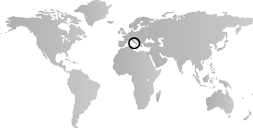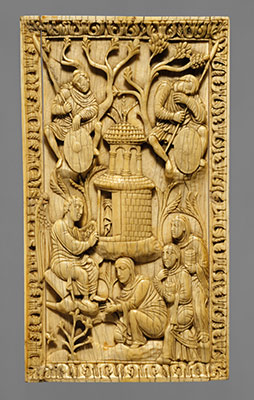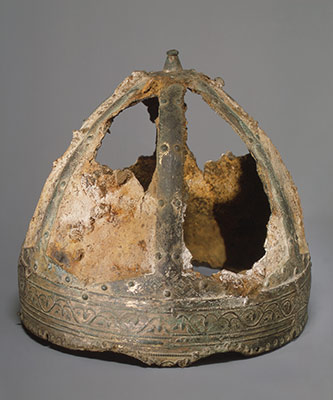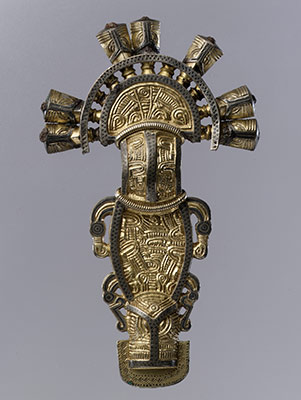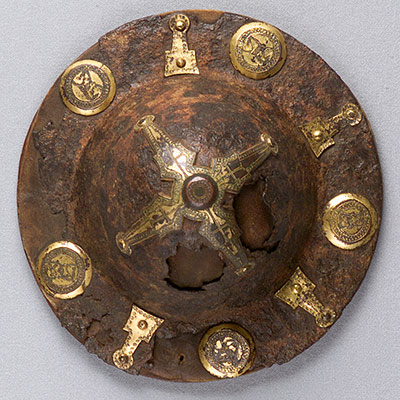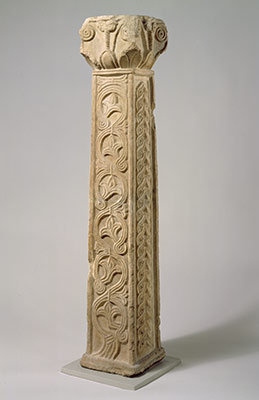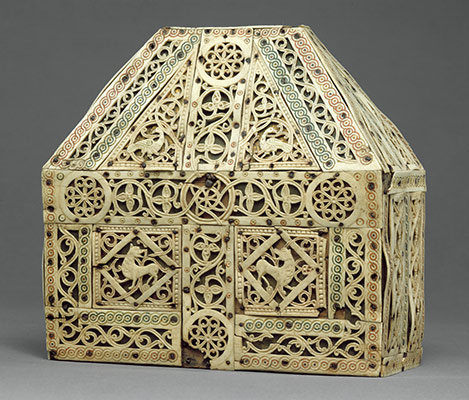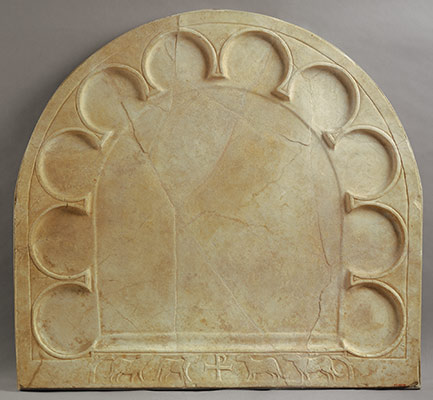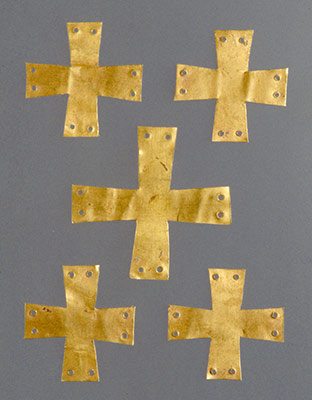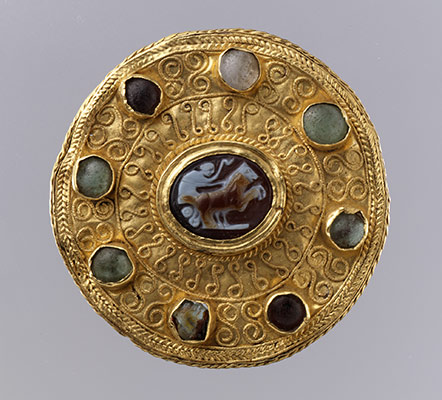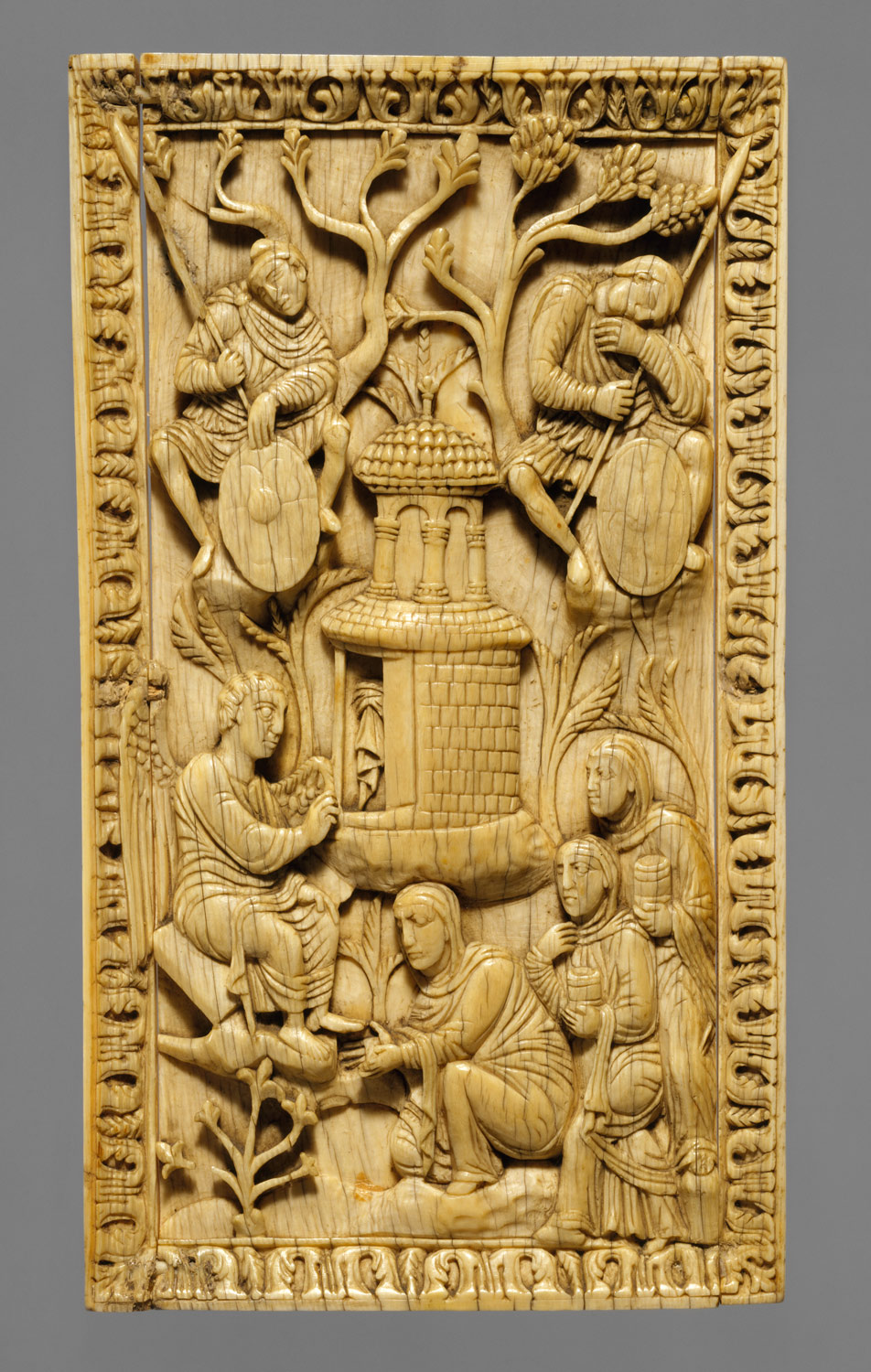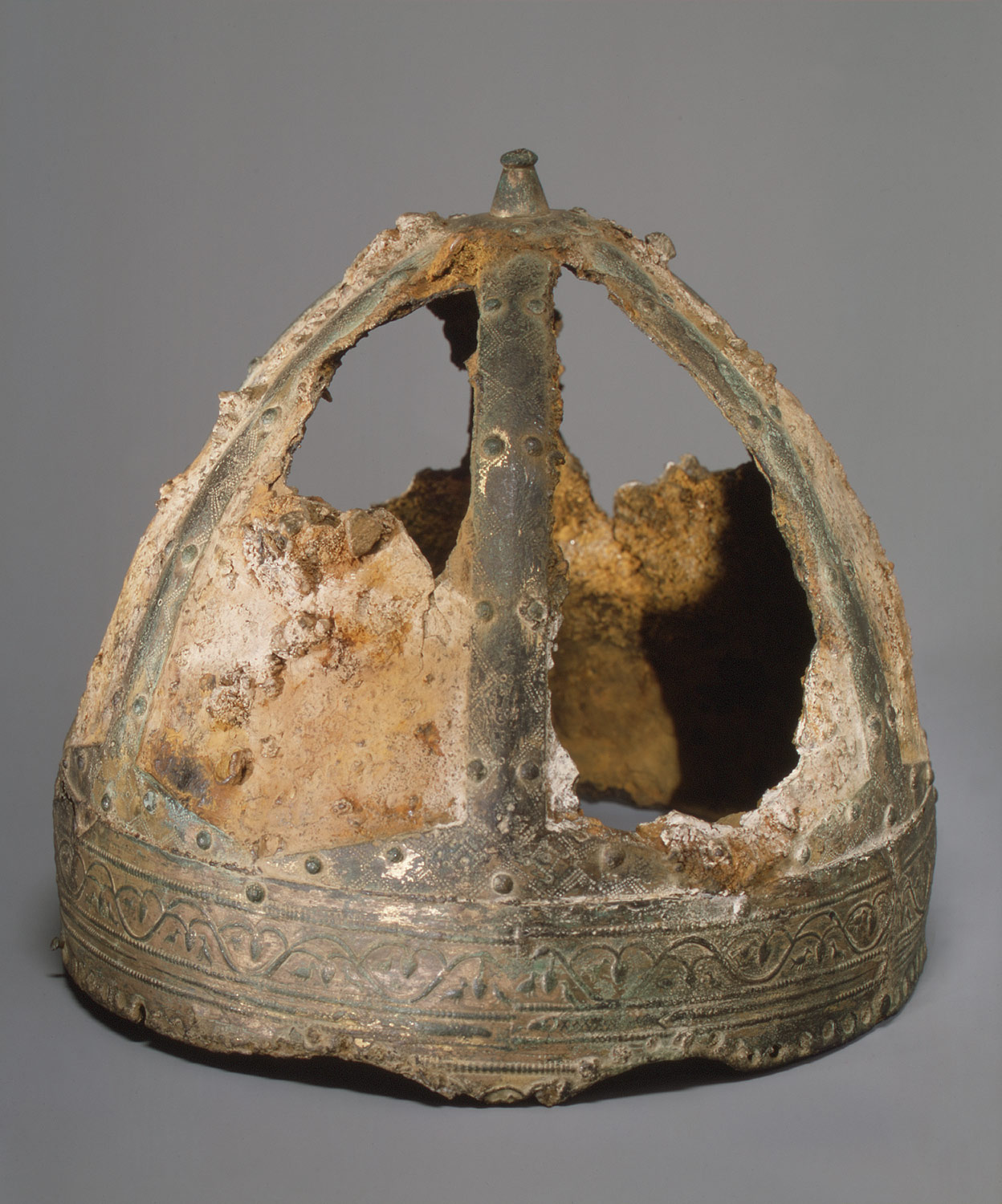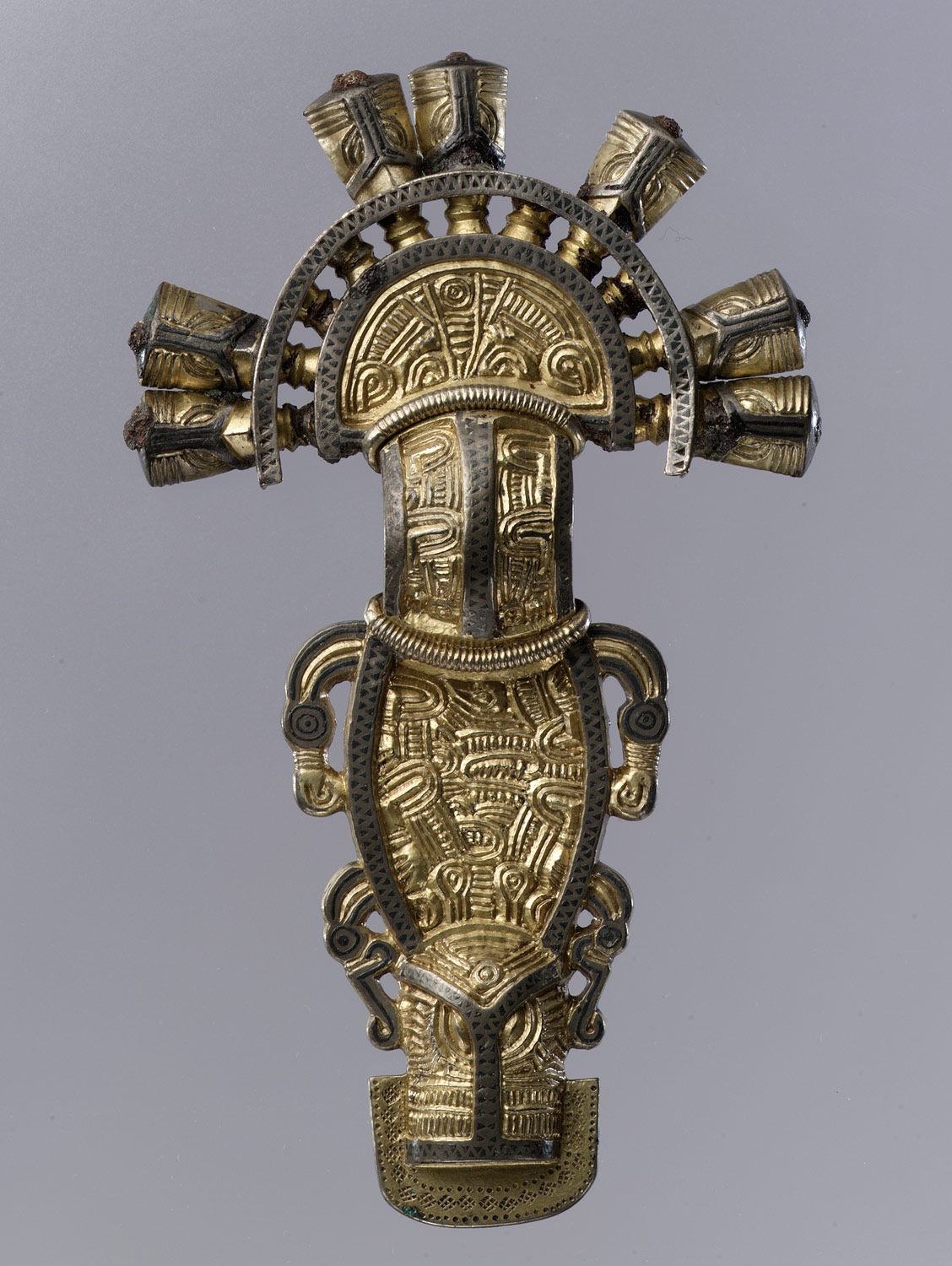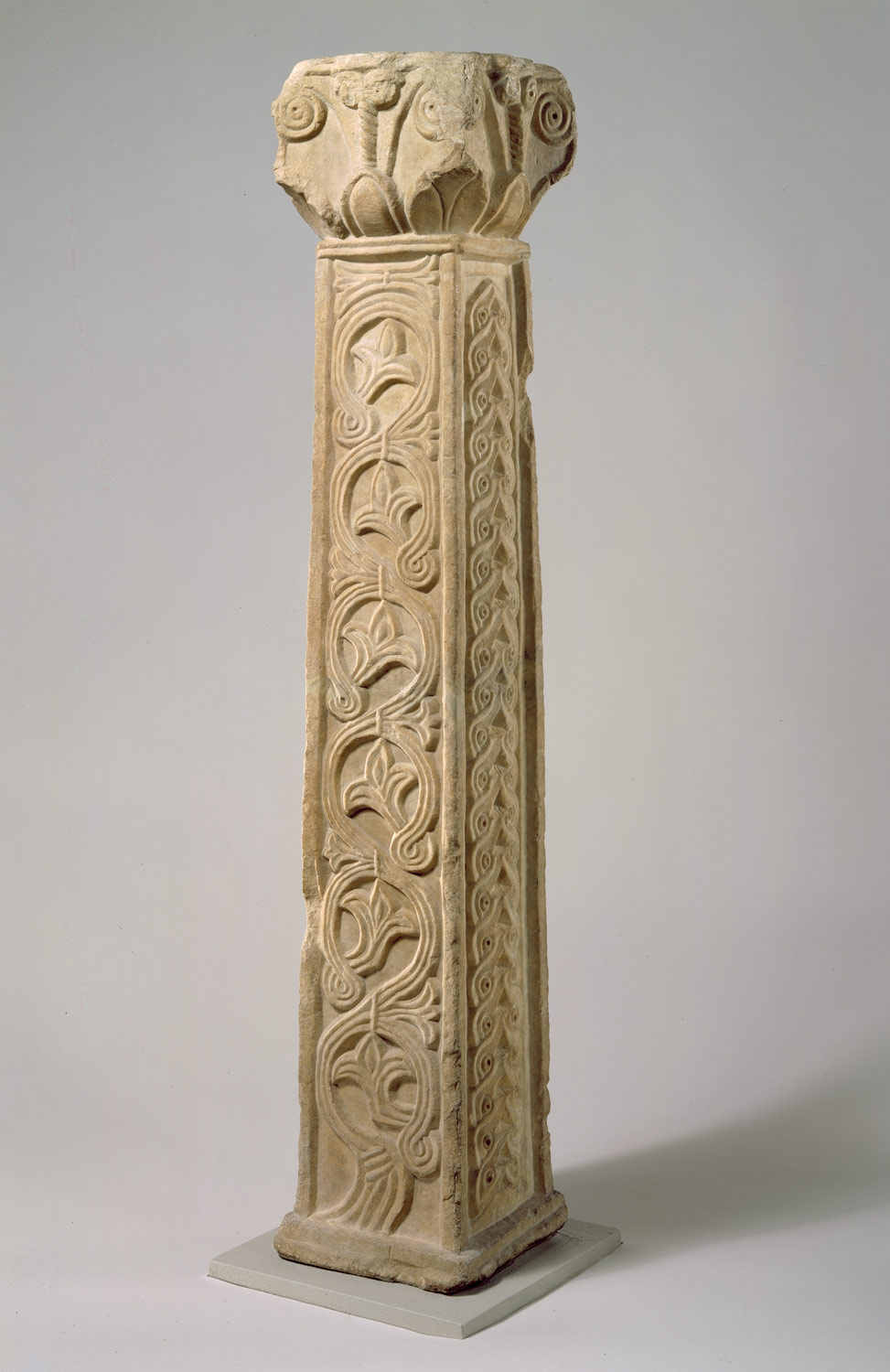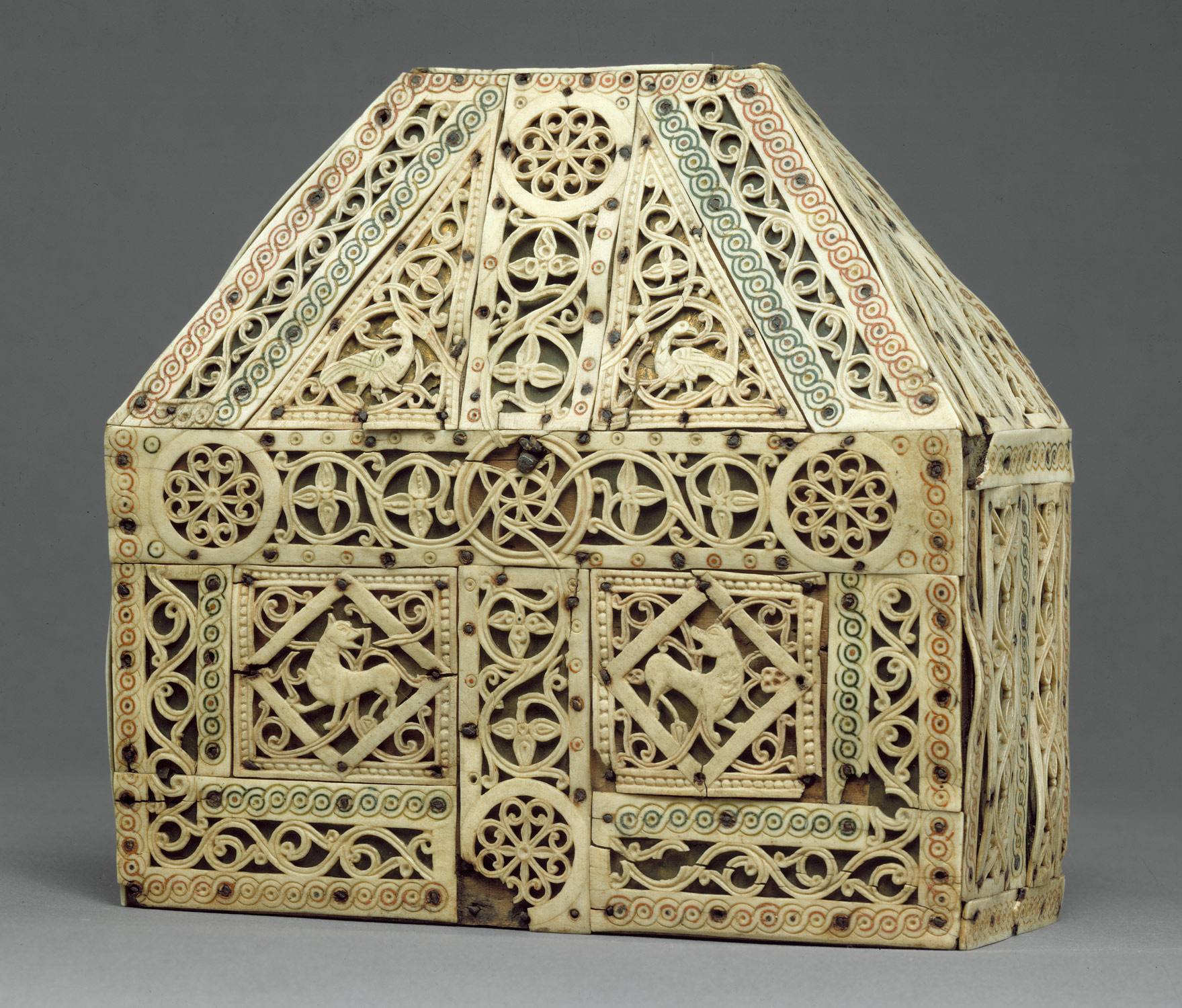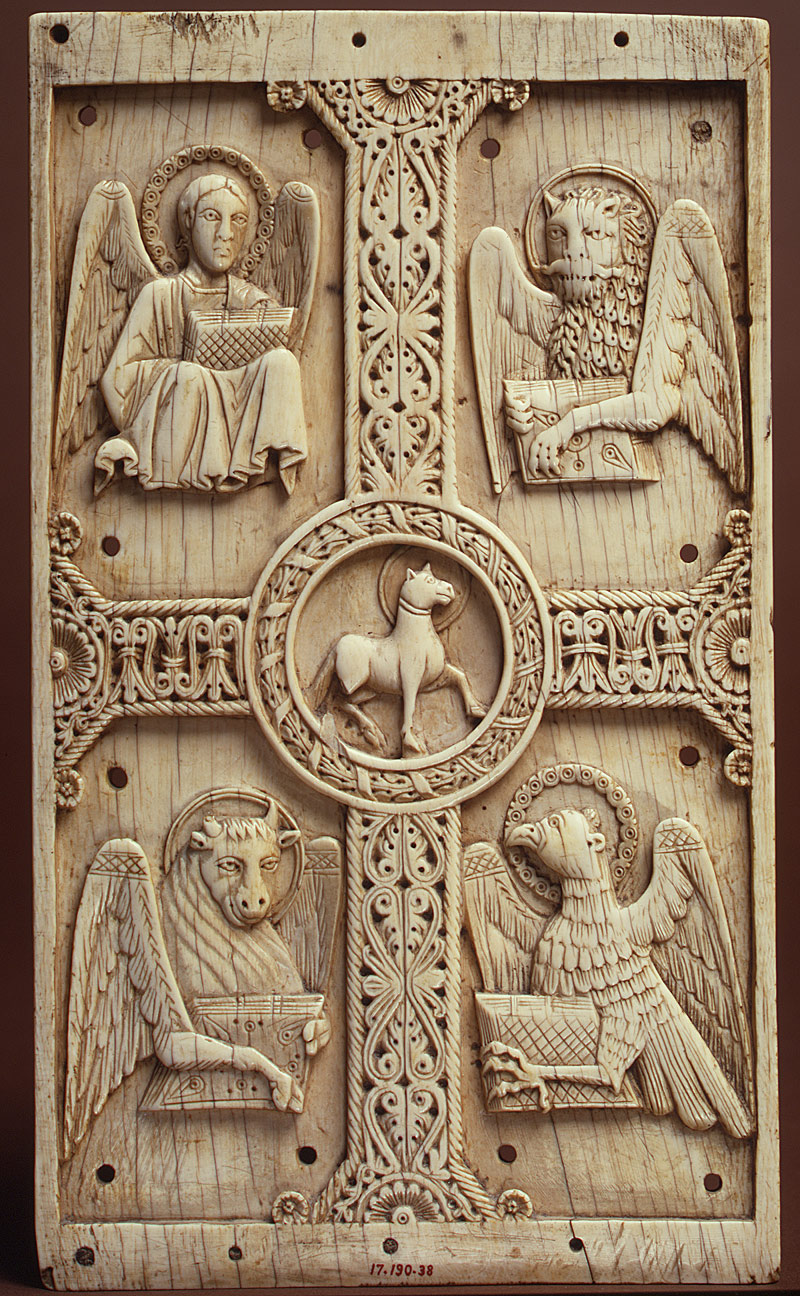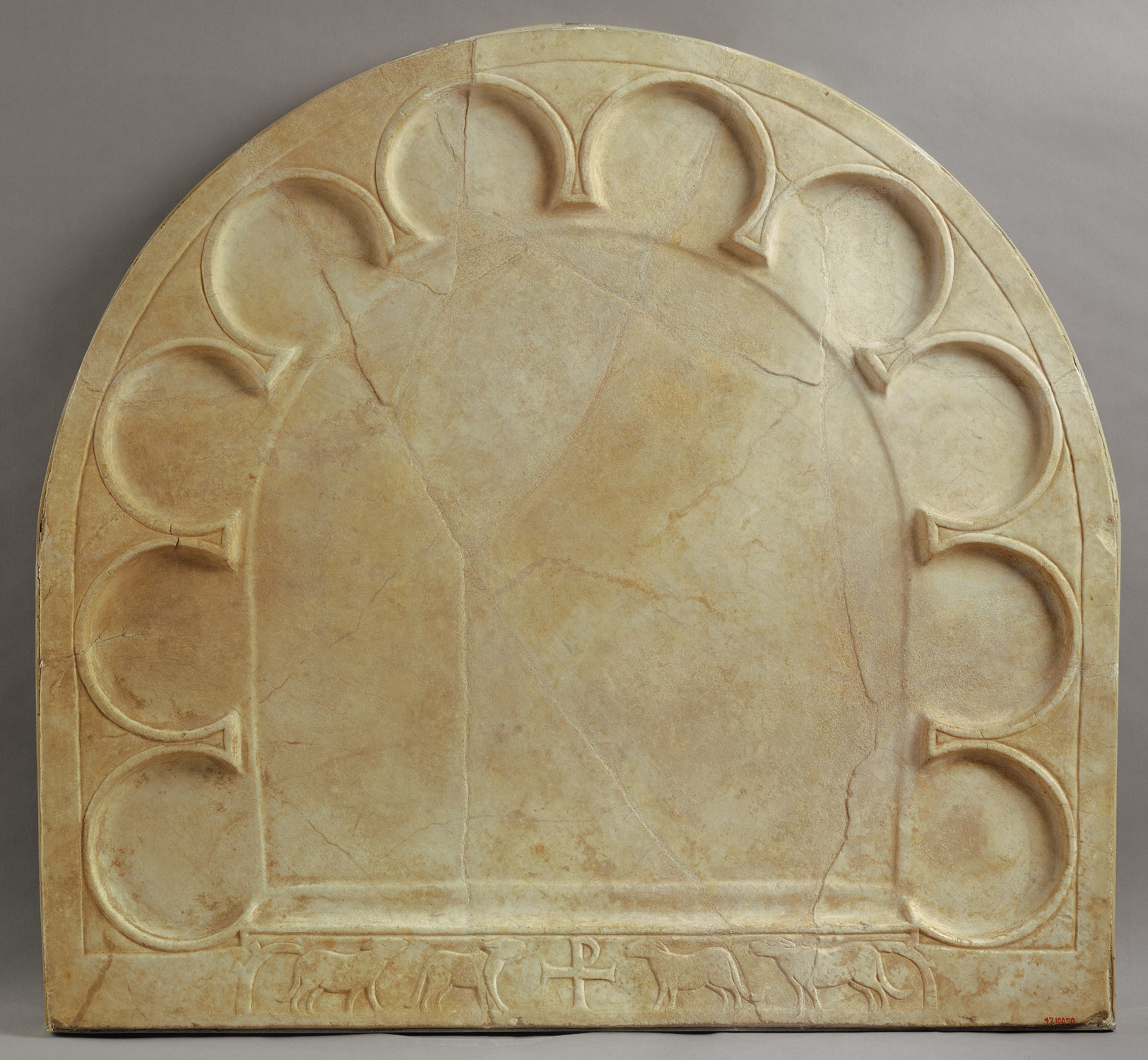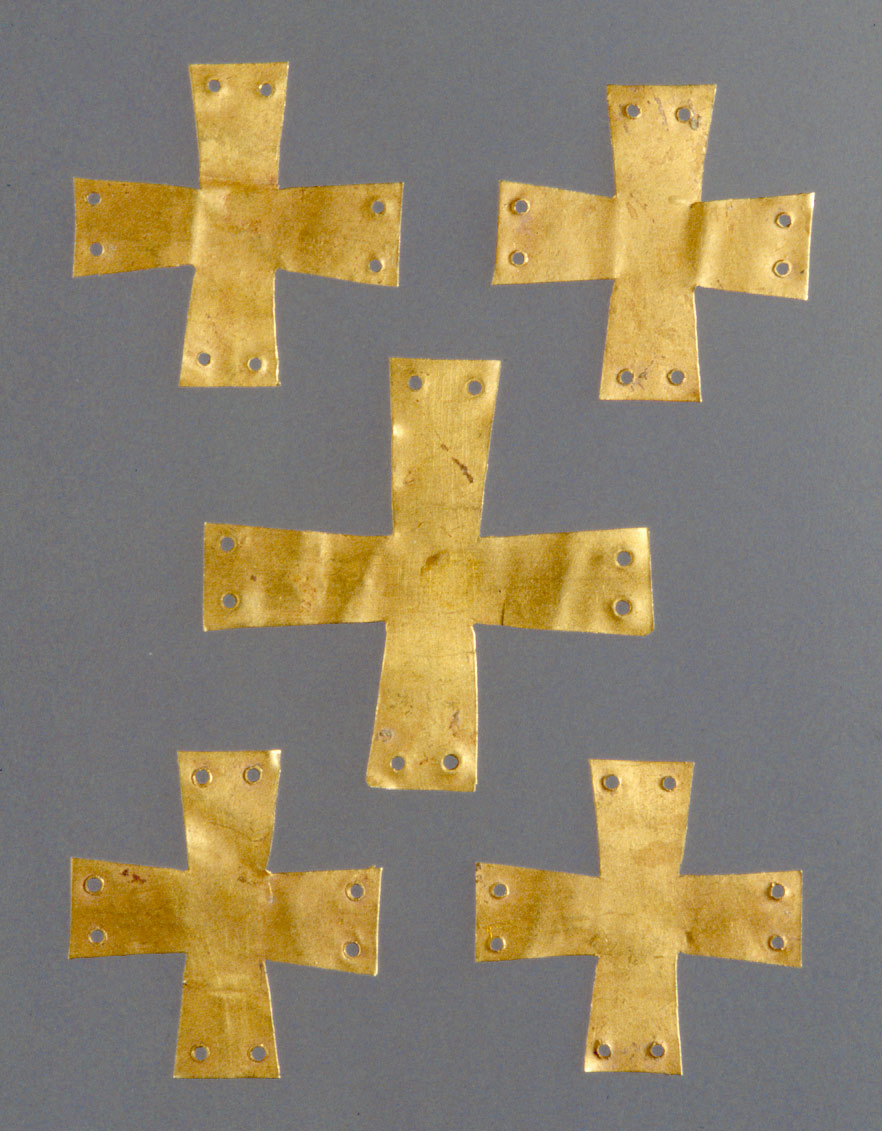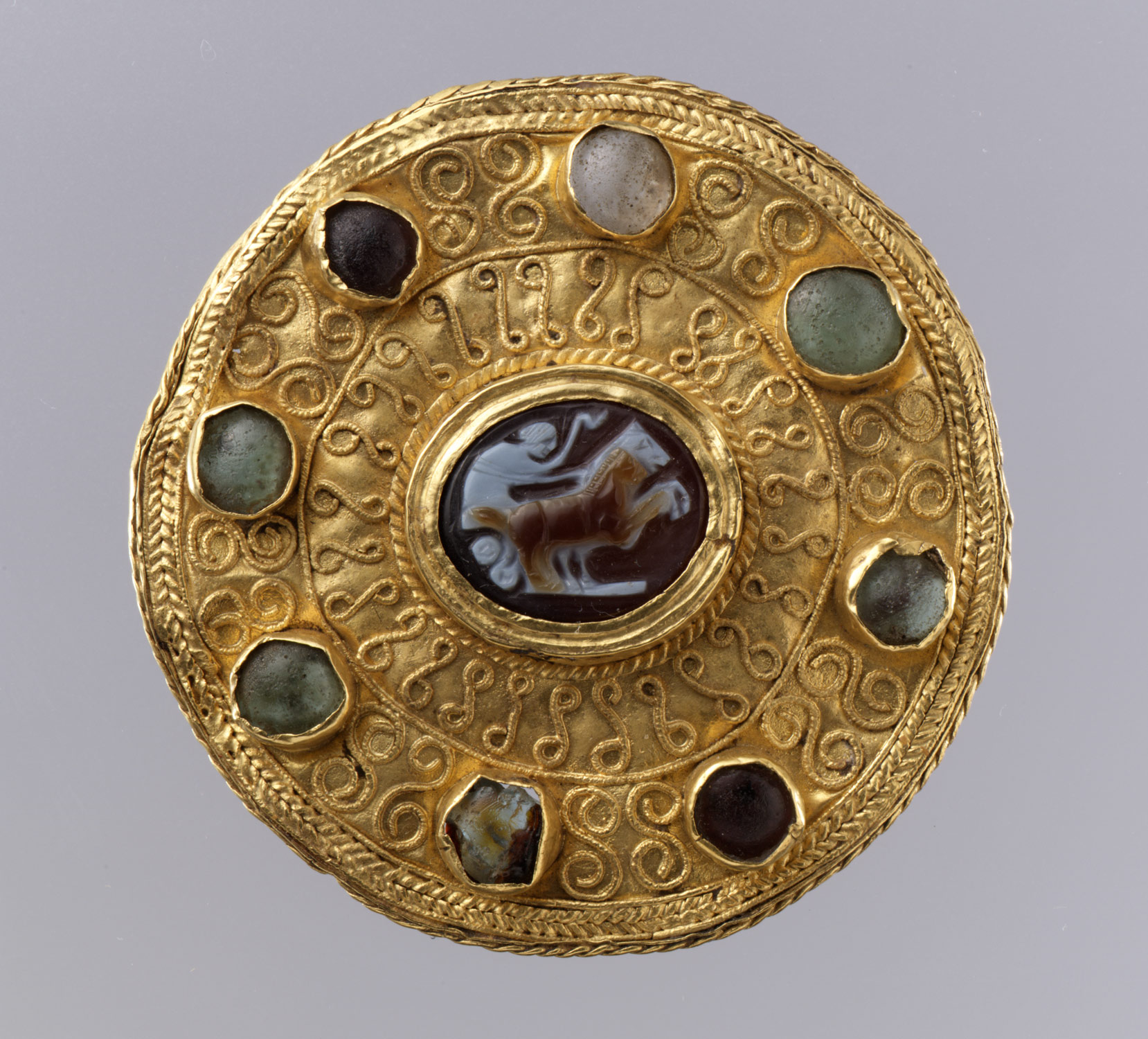Between 500 and 1000, successive waves of conquerors—Ostrogoths, Byzantines, Langobards, Franks, and Arabs—capture and recapture strategic cities in the Italian peninsula and Sicily and erect monuments to assert their legitimacy. Because of the many peoples active in the Italian peninsula, art of the period shows the influence of many different styles. The legacy of the Roman empire looms large; while many ancient buildings fall into disrepair, many Roman roads and bridges remain serviceable and monumental art is everywhere in evidence. Italian builders quarry Roman sites for precious marbles, and Italian painters and sculptors refashion motifs from Roman art.
Italian Peninsula, 500–1000 A.D.
Timeline
500 A.D.
625 A.D.
NORTH AND CENTRAL ITALY
SOUTH ITALY
SICILY
625 A.D.
750 A.D.
NORTH AND CENTRAL ITALY
SOUTH ITALY
SICILY
750 A.D.
875 A.D.
NORTH AND CENTRAL ITALY
SOUTH ITALY
SICILY
875 A.D.
1000 A.D.
NORTH AND CENTRAL ITALY
SOUTH ITALY
SICILY
Overview
Key Events
-
ca. 5th–8th century
At the fall of the Western Roman Empire in 476, Corsica is taken by the Vandals but conquered in 535 by the Byzantine general Belisarius. Although Corsica is invaded shortly thereafter by the Goths, it remains a possession of the Byzantine empire until 725, when it falls under the domain of the Lombard kingdom of the Italian peninsula.
-
ca. 530
Saint Benedict of Nursia founds the Abbey of Monte Cassino on the site of a former temple to the Greco-Roman god Apollo. Credited with gifts of prophecy, healing of the sick, and many miracles, he leads his community of monks in a life of prayer and work. He devises a rule for monasteries, which codifies the duties of monks and their abbot as well as the organization and routine of the monastic community. Numerous communities throughout western Europe adopt Benedict’s model and his code.
-
ca. 535
Belisarius, commander of the Byzantine army, lands in Sicily and attempts to claim the entire Italian peninsula for the Byzantine emperor Justinian I (r. 527–65). In 540, he wrests Ravenna from Ostrogothic control, and an ambitious program of church building begins there. The Church of San Vitale, a structure of octagonal plan with rich mosaic decoration, is dedicated in 547, a proud symbol of Byzantine splendor. The rest of Italy remains a more elusive prize for the Byzantine forces, and the bitterly fought war continues until 552, when General Narses—with the help of the Lombards—defeats the main Ostrogothic forces.
-
ca. 568
The Lombards, a Germanic people from north of the Alps, invade the Italian peninsula, establishing duchies in both the north and the south. The Byzantines retain territories across the middle of the peninsula, from Rome to Ravenna. These, along with Venice, Sardinia, Sicily, and Naples, remain under Byzantine rule.
-
590
Gregory the Great is elected pope. A descendant of a Roman senatorial family, Gregory serves as diplomat, political advisor, and founder of monasteries before ascending to the papacy. His voluminous correspondence includes letters to prelates and heads of state, such as Theodolinda, queen of the Lombards, who is instrumental in converting her people to Orthodox (Catholic) Christianity.
-
612
At the invitation of the Langobardic king Agilulf, the Irish monk Columban establishes a monastery at Bobbio. The scriptorium there becomes a flourishing center for the copying and illumination of sacred texts. The earliest extant manuscripts with decorated initial letters come from Bobbio, where the tradition may have originated.
-
7th–8th century
The papacy gains increasing independence from Byzantium, acquiring sovereignty over territories in much of central Italy, including Ravenna. In the 730s, this autonomy permits the pope to openly disagree with Byzantine emperors on iconoclasm. The popes are great patrons of art and architecture and build or rebuild many churches, particularly in Rome.
-
751
The Lombards expand their Italian holdings, capturing Rome and invading Ravenna the following year. The pope appeals to Pepin, king of the Franks, for aid against them in 754, and in 756 substantial territories are returned to papal control. When the Lombards attack Rome again in 773, the Franks, under Charlemagne, return and destroy Lombard power in northern and central Italy, though the Lombards retain control over independent duchies in the south.
-
800
Charlemagne, king of the Franks, is crowned “Emperor and Augustus” by Pope Leo III in Rome. The coronation, which takes place in Saint Peter’s Basilica, legitimizes Charlemagne’s claim as heir-to-be of the Roman empire and champion of the Catholic Church.
-
810
Byzantine and Frankish forces sign a peace treaty that places Venice under nominal Byzantine control but guarantees the city freedom to trade with the kingdoms of the western Mediterranean. A short time later, the relics of Saint Mark are transferred from Alexandria to Venice, increasing the city’s prestige. The security of the Venetian islands had attracted settlers during the Langobardic invasions of the sixth century; the city’s location and independent status later make it a great maritime and commercial power, and a prosperous patron of the arts.
-
838–871
Arab forces appear for the first time on the Italian peninsula in Apulia in 838. Rome is attacked in 846 and briefly held. Bari is the center of a short-lived emirate (847–71).
-
ca. 9th–11th century
The Aghlabids from North Africa (800–909) harry the coasts of Sicily, Sardinia, Corsica, and southern Italy, and later appoint Kalbid governors in Sicily. When the Fatimids (909–1171) replace the Aghlabids in North Africa, they retain the Kalbid governors, who will rule virtually independently (948–1053) until the arrival of the Normans.
-
ca. 9th century
On the island of Sardinia, ruled by the Byzantine empire since 535, central government is replaced by Aghlabid governors, although the native Sardinians create an autonomous government of administrative and juridical districts called giudicati. These four states (Torres, Cagliari, Arborea, and Gallura), ruled by judges called giudici, remain in place until the early fourteenth century.
-
961
Otto I annexes the kingdom of Italy in the north and the next year receives the imperial title from Pope John XII. He then spends ten of the next twelve years in Italy, much to the annoyance of the pope. Otto I seems to prefer Italian artists, particularly in Milan, for a number of his commissions, including the ivory plaques (41.100.157) meant for the Cathedral of Magdeburg in Germany, which he founded.
Citation
“Italian Peninsula, 500–1000 A.D.” In Heilbrunn Timeline of Art History. New York: The Metropolitan Museum of Art, 2000–. http://www.metmuseum.org/toah/ht/?period=06®ion=eust (October 2001)
Related
Map
